What < could a Trump presidency mean for the world? Well like many other people in the Southern Hemisphere I got up very early this morning to find out whether Clinton, as expected, had bested Trump in the US elections, only to find that the unthinkable had happened. To learn that the most powerful nation on Earth had chosen a man considered by almost half its population to be unqualified and temperamentally unfit to hold its highest office was a huge shock. I must also admit to feeling enormous dismay that a man who has no understanding of nuclear power now holds the nuclear codes; and a man who believes that climate change is a hoax is now in a position to tear up the Paris Agreement. In little more than a day the global rulebook has changed - actually the rulebook has been torn up and thrown away. Volatile waves of change are therefore likely to intensify, dramatically reshaping the world as we know it especially in the geopolitical and macroeconomic landscapes. But on closer reflection, is this necessarily such a bad thing? The Asian Development Bank believes Asia’s GDP will increase nine-fold from $16 trillion in 2010 to $148 trillion in 2050. This is expected to account for half the global GDP by mid-century, resulting in a rebalancing of global economic power which would see China and India overtake the United States to become the world’s largest and second largest economies respectively in terms of GDP by 2050. This development would result in an emerging shift in power from the West to the East, and with Asia’s potentially historic rise among the global community of nations, the 21st century would become an Asian Century dominated by Asian superpowers and Asian economic, political, governance and cultural institutions. In light of the result of the 2016 US election, however, this could change. If Trump's promise of a resurgence in the fortunes of the US economy materializes, a revitalized US economy could mean the US retaining its geoeconomic position in decades to come. Although this would maintain the current status quo, it would also mix things up, and in another scenario, a Global Century could emerge: one in which no one country or continent has a prevailing concentration of influence. This Global Century would ideally be characterized by interdependence rather than insularity; with new thinking, collaborative effort and coalitions of interest to address rising challenges. Is this too much to hope for? I really, really hope not!
Author Archives: Carole Knight
How going green can offer massive cost savings
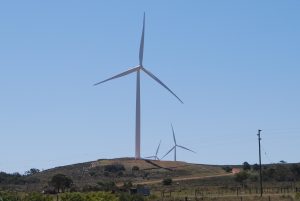 As < the world continues to debate whether or not climate change is a reality, businesses throughout South Africa are weighing up the pros and cons of “going green”. While some use eco status as a badge to promote a good image, others are intent on actually making a difference in the way they impact the environment.
In the construction industry, for example, many companies are focussing on green building, ensuring that materials used are environmentally friendly and that the buildings are designed to promote natural airflow, less electricity usage and increased incorporation of greenery. The question is, what happens after these buildings are occupied? Are green principles maintained by those that use the space? Are green cleaning methods used, is printing limited, is pollution thwarted? If not – can the building still be called green?
The key to achieving “going green” is training (educating people how to be more green) and viability (is it affordable for companies to choose a less harmful path?). According to Shawn Andrews, Managing Director of BanoBrite, companies are still skeptical about the green movement. “We developed a ‘green challenge’ and approached a number of lodges and hotels, challenging them to change their cleaning footprint to a completely green solution,” confirms Andrews. “We were met with much skepticism. This ranged from price concerns to indifferent attitudes.”
[caption id="attachment_4648" align="alignleft" width="300"]
As < the world continues to debate whether or not climate change is a reality, businesses throughout South Africa are weighing up the pros and cons of “going green”. While some use eco status as a badge to promote a good image, others are intent on actually making a difference in the way they impact the environment.
In the construction industry, for example, many companies are focussing on green building, ensuring that materials used are environmentally friendly and that the buildings are designed to promote natural airflow, less electricity usage and increased incorporation of greenery. The question is, what happens after these buildings are occupied? Are green principles maintained by those that use the space? Are green cleaning methods used, is printing limited, is pollution thwarted? If not – can the building still be called green?
The key to achieving “going green” is training (educating people how to be more green) and viability (is it affordable for companies to choose a less harmful path?). According to Shawn Andrews, Managing Director of BanoBrite, companies are still skeptical about the green movement. “We developed a ‘green challenge’ and approached a number of lodges and hotels, challenging them to change their cleaning footprint to a completely green solution,” confirms Andrews. “We were met with much skepticism. This ranged from price concerns to indifferent attitudes.”
[caption id="attachment_4648" align="alignleft" width="300"] Room at Valley Lodge[/caption]With a little persistence, however, Andrews found a business that was ready to take up the challenge – Valley Lodge and Spa in Magaliesburg. Valley Lodge took up the task of greening the business, beginning with the process of converting the entire establishment from chemicals to green cleaning, thus making it the first lodge in South Africa to adopt a 100% green cleaning policy.
Room at Valley Lodge[/caption]With a little persistence, however, Andrews found a business that was ready to take up the challenge – Valley Lodge and Spa in Magaliesburg. Valley Lodge took up the task of greening the business, beginning with the process of converting the entire establishment from chemicals to green cleaning, thus making it the first lodge in South Africa to adopt a 100% green cleaning policy.
The first step in revolutionising the cleaning process was to determine the number of products used in each department (laundry, kitchen and housekeeping) and the areas where they could be replaced with the BanoBrite/Green Worx range of products. “To ensure a smooth change-over in each department, it was decided to convert each department individually. This meant that with adequate training, the integrity of the green methodologies was maintained,” confirms Andrews.
In response to cost concerns, Andrews confirms that product usage was reduced by 30% in the first two weeks of the change. In addition, one all-purpose cleaner replaced up to four chemical cleaning products, making it even more cost effective. The kitchen is now more sanitary, with the use of non-toxic cleaning products, and the sewage plant was treated with a sewage activator, which eliminated the waste and chemical build up that had been exacerbated over time.“Valley lodge is now 100% green; no chemicals are being used on the property, their costs have decreased by 40% and continue to drop,” concludes Andrews. “This is an example that all businesses aspiring to go green should follow – start where you can and then go all out!”
How a nine year old scooped a major conservation award
Hunter Mitchell, Aquila Animal and Rescue Centre’s (ARC) Ambassador, has scooped the “Visionary Wildlife Warrior for 2016” award of the Steve Irwin Wildlife Warrior Foundation in Australia.
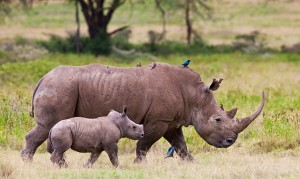 Nine < year old Hunter Mitchell was so inspired by the drama that played out at the Aquila Private Game Reserve in the Western Cape South Africa in the early hours of 31 December 2015, when a rhino calf was born, abandoned by its mother, and subsequently rescued by animal welfare staff at the reserve, that he set about single-handedly raising R75 000 to assist in hand-rearing the calf.
The calf, which has been named “Osita” which means “from today onwards it will be better”, is now a strapping youngster weighing in at 600 kilograms and standing 1.4 meters tall. Osita has adapted well to its surroundings with the help of a goat animal companion called “Bokkie”, which was introduced to teach the rhino calf how to graze. Bokkie has also helped to reduce human interaction so that Osita can eventually be released back into the wild. Osita, Bokkie and a human carer spend every hour of the day together, and are often seen on their twice-daily walks through the reserve.
Nine < year old Hunter Mitchell was so inspired by the drama that played out at the Aquila Private Game Reserve in the Western Cape South Africa in the early hours of 31 December 2015, when a rhino calf was born, abandoned by its mother, and subsequently rescued by animal welfare staff at the reserve, that he set about single-handedly raising R75 000 to assist in hand-rearing the calf.
The calf, which has been named “Osita” which means “from today onwards it will be better”, is now a strapping youngster weighing in at 600 kilograms and standing 1.4 meters tall. Osita has adapted well to its surroundings with the help of a goat animal companion called “Bokkie”, which was introduced to teach the rhino calf how to graze. Bokkie has also helped to reduce human interaction so that Osita can eventually be released back into the wild. Osita, Bokkie and a human carer spend every hour of the day together, and are often seen on their twice-daily walks through the reserve.
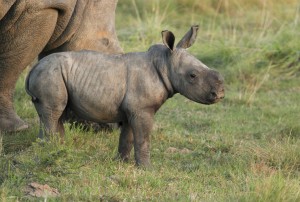 Hunter frequently visits Osita and lends a hand with mud baths, feeding and mucking out of the boma, the protected area where Osita currently lives.
Hunter frequently visits Osita and lends a hand with mud baths, feeding and mucking out of the boma, the protected area where Osita currently lives.
Together with rhino carer, Divan Grobler, and with the blessing of A.R.C and Rhino Art (an NGO focussed on the international education of children), Hunter has visited many schools in the Western Cape area, raising awareness about rhino conservation. And with its positive outcome, Osita’s story has become a symbol of hope for the conservation of rhinos in Africa.
Hunter and his parents have been invited to attend the “Visionary Wildlife Warrior for 2016” Gala Event in Brisbane to receive his award at the end of the month. Unfortunately funds are an issue and A.R.C. together with Rhino Art are appealing to the public to assist in getting this little wildlife warrior across the ocean to collect his award. They are looking to raise around R80 000 to send Hunter, his mom and Grobler across to Australia, with the view of Hunter and Grobler conducting talks about rhino conservation at various schools in the Australian city and surrounds.
Watching fireflies light up an African night
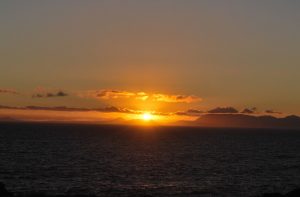 Every so often life surprises you with an experience so awesome that it simply takes your breath away. Last night I had one such experience. Standing in a dark wood beside a gently-flowing stream with a shower of brilliant stars overhead, I watched fireflies light up a balmy spring night as they danced a mating call in a waltz of dazzling beauty.
Every so often life surprises you with an experience so awesome that it simply takes your breath away. Last night I had one such experience. Standing in a dark wood beside a gently-flowing stream with a shower of brilliant stars overhead, I watched fireflies light up a balmy spring night as they danced a mating call in a waltz of dazzling beauty.
As I watched the tiny flashes of the fireflies light up the darkness of the African night, I thought how privileged I was to witness this silent star-spangled display of Nature, as fireflies are sensitive to light, and light pollution from lit-up cities and towns is diminishing their numbers in heavily-populated regions of the world.
Fireflies hibernate over winter in their larval stage and emerge in spring to begin the serious business of perpetuating the species with synchronized flashes of light. These magical flashes of bioluminescence, emitted from glands in their lower abdomen, signal the fireflies’ courtship dance, and each firefly species has a different pattern of flashes.
Without their chemically-produced light show, fireflies are unprepossessing little bugs. They really don’t look anything special in the harsh daylight hours. It is their dazzling courtship dance during the dark hours of the night that utterly transforms them into insect fairies.
Definitely a night I will remember!
Sharing recycling and plastics know-how on the African continent
 Located < along the Gulf of Guinea and the Atlantic Ocean, in the sub-region of West Africa, Ghana is considered an important trading partner with South Africa. There are numerous exciting investment opportunities for South African plastics companies, especially in the agro-processing and food packaging sectors, which a Plastics|SA delegation that recently went to Ghana wanted to investigate. This delegation was part of a Plastics Export Development Programme (PEDP) which aims to grow the industry’s export base beyond the SADC economic bloc.
As part of their trade mission, the Plastics|SA delegation held discussions with local plastics companies operating in the West African region, including Ghana Plastic Manufacturers Association, Poly Tank, Global Plastic Industries and Aspiring Syringes Manufacturer.
The Ghana Plastic Manufacturers Association represents 95% of their local plastics industry and comprises of 110 plastics manufacturers: the country’s national consumption was approximately 815 000 tons in 2015. In terms of recycling, large emphasis is placed on PET bottles in Ghana, owing to the fact that the recycling industry in this country is still very small. The majority of the plastic they collect is baled and exported (primarily to China).
Located < along the Gulf of Guinea and the Atlantic Ocean, in the sub-region of West Africa, Ghana is considered an important trading partner with South Africa. There are numerous exciting investment opportunities for South African plastics companies, especially in the agro-processing and food packaging sectors, which a Plastics|SA delegation that recently went to Ghana wanted to investigate. This delegation was part of a Plastics Export Development Programme (PEDP) which aims to grow the industry’s export base beyond the SADC economic bloc.
As part of their trade mission, the Plastics|SA delegation held discussions with local plastics companies operating in the West African region, including Ghana Plastic Manufacturers Association, Poly Tank, Global Plastic Industries and Aspiring Syringes Manufacturer.
The Ghana Plastic Manufacturers Association represents 95% of their local plastics industry and comprises of 110 plastics manufacturers: the country’s national consumption was approximately 815 000 tons in 2015. In terms of recycling, large emphasis is placed on PET bottles in Ghana, owing to the fact that the recycling industry in this country is still very small. The majority of the plastic they collect is baled and exported (primarily to China).
 “From our talks it became clear that Ghana would welcome South African plastics companies entering their market – especially in the plastics pipes and packaging sub-sectors. They also asked us to provide them with more information about the Plastics|SA Constitution, Programme of Action and other supporting documentation, as they would like to participate with us in global and regional plastics related initiatives,” Tapula said.
“From our talks it became clear that Ghana would welcome South African plastics companies entering their market – especially in the plastics pipes and packaging sub-sectors. They also asked us to provide them with more information about the Plastics|SA Constitution, Programme of Action and other supporting documentation, as they would like to participate with us in global and regional plastics related initiatives,” Tapula said.
“From a corporate governance point of view, our meetings were extremely relevant because we now know which policies, regulations and government institutions to engage with around issues of trade and investment in Ghana. We will continue to explore these and other opportunities for our members in order to unlock the numerous benefits of cross-border trade and investment,” Tapula concluded.
What would an extinction of experience mean for tomorrow’s children?
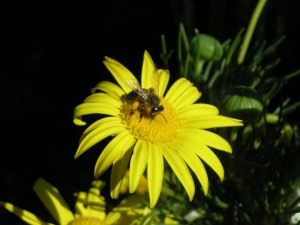 An < eminent professor at Stellenbosch University once told me that at the planet’s present rate of deforestation, habitat incursion and biodiversity loss, our children’s children could have an “extinction of experience”.
This means that tomorrow’s children would be denied the wonder of connecting to and interacting with the natural world, a disconnection that would render them out of touch with what is wild and free. But beyond losing the intrinsic and aesthetic value of different species, tomorrow’s children would be denied the important functional and consumptive benefits that services from nature provide.
Here are some staggering statistics: over the last 300 years the global forest has shrunk by approximately 40%. Since the turn of the 20th Century, the world has lost about 50% of its wetlands. Over the last half-century 60% of the Earth's ecosystem services have been degraded. Some 20% of the world's coral reefs have been destroyed. In the past two decades 35% of mangroves have disappeared. And over the last decade 13 million hectares of forest have been lost through deforestation each year.
An < eminent professor at Stellenbosch University once told me that at the planet’s present rate of deforestation, habitat incursion and biodiversity loss, our children’s children could have an “extinction of experience”.
This means that tomorrow’s children would be denied the wonder of connecting to and interacting with the natural world, a disconnection that would render them out of touch with what is wild and free. But beyond losing the intrinsic and aesthetic value of different species, tomorrow’s children would be denied the important functional and consumptive benefits that services from nature provide.
Here are some staggering statistics: over the last 300 years the global forest has shrunk by approximately 40%. Since the turn of the 20th Century, the world has lost about 50% of its wetlands. Over the last half-century 60% of the Earth's ecosystem services have been degraded. Some 20% of the world's coral reefs have been destroyed. In the past two decades 35% of mangroves have disappeared. And over the last decade 13 million hectares of forest have been lost through deforestation each year.
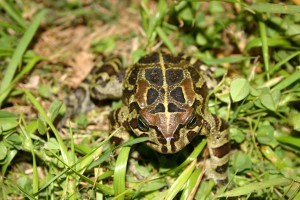 In purely monetary terms, ecosystem services deliver a whopping US$21 to US$72 trillion a year in essential services. However, Nature is a life support system, and ultimately we are dependent on living, functioning ecosystems like woodlands, shrublands and grasslands; the biodiversity that exists within them; and the ecological services they provide.
In purely monetary terms, ecosystem services deliver a whopping US$21 to US$72 trillion a year in essential services. However, Nature is a life support system, and ultimately we are dependent on living, functioning ecosystems like woodlands, shrublands and grasslands; the biodiversity that exists within them; and the ecological services they provide.
Also, we have forgotten that since time immemorial the natural world has shaped our evolutionary path, a trajectory that started on the African savanna where our first ancestors appeared thousands of centuries ago. In this way we are as inextricably linked to the wind whispering in treetops, to clouds scudding across a darkened sky, to the deep rumble of distant thunder, or to the sigh of the ocean as it leaves the shore as a leopard prowling a rocky mountain ledge.
Therefore, an extinction of experience would mean that future generations would lose not only wild places and the wild creatures that live within them, the monetary value of ecosystems, and the vitally important services they provide. Tomorrow’s children would lose a profound and enduring human connection – a connection that has sustained our species since the beginning of our time.
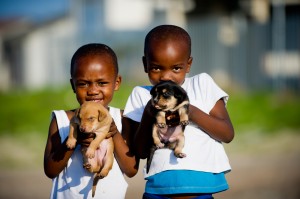 We have reached a crossroads. This momentous moment, and the actions we take in the time ahead, will determine whether tomorrow’s children will live in a world much like the one in which we have evolved. Or whether they will live in an impoverished world that will render them far removed from everything innocent, natural and free. It is up to us to make sure it is the former!
We have reached a crossroads. This momentous moment, and the actions we take in the time ahead, will determine whether tomorrow’s children will live in a world much like the one in which we have evolved. Or whether they will live in an impoverished world that will render them far removed from everything innocent, natural and free. It is up to us to make sure it is the former!
Donald Trump and the rebellious atom
I find it absolutely astounding that Donald Trump, a man who is running for the highest office of arguably the most powerful country on Earth, and who has lived through Chernobyl, Three Mile Island and Fukushima, can dismiss nuclear confrontation with a metaphorical flick of his wrist. This is what I know about the rebellious atom:
Early in the morning of 1 March 1954, a 15-megaton nuclear blast, which was detonated by the US military, and which was codenamed Bravo, caused a blinding mushroom cloud of ferocious heat to soar high into the atmosphere above Bikini Atoll in the Pacific Ocean, generating winds of searing intensity that irradiated the ocean and atolls surrounding the the test site. The Rongelap and Ailinginae Atolls, which were situated directly under a deadly cloud of fallout ash, were covered in a thick blanket of white radioactive dust.
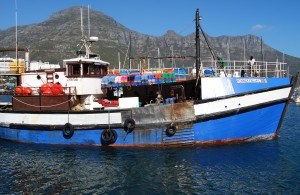 This < gritty synthetic snow also rained down onto the deck of a Japanese tuna trawler, ironically named Lucky Dragon No. 5, resting at anchor in the vicinity of the test site. Within hours of the settlement of the deadly white ash, both islanders and the trawler's fishermen began exhibiting signs of acute radiation sickness: nausea, severe vomiting, diarrhea, itching eyes, and burning, blistering ulceration of their skin. Some hours later their hair began to fall out. Many pregnancies of Marshallese women ended in miscarriage or resulted in the births of tragically malformed babies who died soon after their first gasps of air. Islanders have since died from various cancers and leukemia.
In 1985 Greenpeace activists evacuated the people of Rongelap Atoll to another of the Marshall Islands as parts of Rongelap were found to be still too highly radioactive for human habitation. More than 62 years after Bravo's blast, Rongelap is still too contaminated by radiation for resettlement of its people.
Nuclear bombs of the magnitude of Bravo destroy by blast and fire as conventional bombs do. However, their killing capacity extends long after their radioactive residue has fallen to Earth. Silent and invisible, the ferocious energy released by a nuclear explosion: the alpha and beta particles and gamma rays of radioactive materials, ionize the cells of human bodies, causing molecular changes, cell mutations, and in high enough doses, instant death. At the very least, the immune systems of people exposed to radiation are compromised, opening the way for susceptibility to a host of diseases and debilitating conditions.
Alpha particles only travel short distances, and are not able to penetrate human skin. Beta particles are able to penetrate skin, but no deeper into the body. Gamma rays are capable of penetrating sheets of steel.
This < gritty synthetic snow also rained down onto the deck of a Japanese tuna trawler, ironically named Lucky Dragon No. 5, resting at anchor in the vicinity of the test site. Within hours of the settlement of the deadly white ash, both islanders and the trawler's fishermen began exhibiting signs of acute radiation sickness: nausea, severe vomiting, diarrhea, itching eyes, and burning, blistering ulceration of their skin. Some hours later their hair began to fall out. Many pregnancies of Marshallese women ended in miscarriage or resulted in the births of tragically malformed babies who died soon after their first gasps of air. Islanders have since died from various cancers and leukemia.
In 1985 Greenpeace activists evacuated the people of Rongelap Atoll to another of the Marshall Islands as parts of Rongelap were found to be still too highly radioactive for human habitation. More than 62 years after Bravo's blast, Rongelap is still too contaminated by radiation for resettlement of its people.
Nuclear bombs of the magnitude of Bravo destroy by blast and fire as conventional bombs do. However, their killing capacity extends long after their radioactive residue has fallen to Earth. Silent and invisible, the ferocious energy released by a nuclear explosion: the alpha and beta particles and gamma rays of radioactive materials, ionize the cells of human bodies, causing molecular changes, cell mutations, and in high enough doses, instant death. At the very least, the immune systems of people exposed to radiation are compromised, opening the way for susceptibility to a host of diseases and debilitating conditions.
Alpha particles only travel short distances, and are not able to penetrate human skin. Beta particles are able to penetrate skin, but no deeper into the body. Gamma rays are capable of penetrating sheets of steel.
 Components of nuclear fallout such as Strontium-90, Iodine-131, Cesium-137 and Carbon-14 can be inhaled, ingested in food, or absorbed through drinking water or irradiated milk.
Components of nuclear fallout such as Strontium-90, Iodine-131, Cesium-137 and Carbon-14 can be inhaled, ingested in food, or absorbed through drinking water or irradiated milk.
Once inside the body, these radioactive substances irradiate tissues, organs and bones from close quarters, often with devastating results: Strontium-90, the most dangerous radioactive material, goes straight to the bones, damaging the bone marrow which produces blood cells.
It is believed that varying levels of Strontium-90, which is a compound not found in nature, exist in every living person on Earth.
Once the rebellious atom is out of control there is no hiding place from its deadly energy force. And human beings have a variable susceptibility to radioactive exposure: the unborn, youngest, oldest and weakest tend to be at great risk, while women have been found to be twice as susceptible to radiation-induced cancers than men.
 Nuclear confrontation has the potential to wreak radiological havoc on living and, as yet, unborn generations. Indeed, nuclear confrontation has the potential to make a wasteland of the Earth. So please, people like Donald Trump, educate yourself about the terrible danger of the rebellious atom. I’ll let Joan Baez have the last word: “If we don’t heed the Nobel laureates warning of things to come/We’ll all be incinerated warriors of the sun.”
Nuclear confrontation has the potential to wreak radiological havoc on living and, as yet, unborn generations. Indeed, nuclear confrontation has the potential to make a wasteland of the Earth. So please, people like Donald Trump, educate yourself about the terrible danger of the rebellious atom. I’ll let Joan Baez have the last word: “If we don’t heed the Nobel laureates warning of things to come/We’ll all be incinerated warriors of the sun.”
Greenpop Festival – a festival of hope
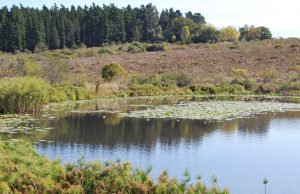 Every < year Greenpop, a Cape Town-based tree-planting and eco-education organisation, hosts a three-week tree-planting and sustainability education Festival of Action in Livingstone, Zambia, that offers participants the chance to secure a discounted or free ticket to the event by raising funds for trees.
This year, 63 Trees for Fees activists have so far raised funds for more than 1700 trees. Many are also going to extraordinary lengths for their campaigns: Jason Ruger is cycling 3000km from Cape Town to Zambia to raise awareness, while others have started YouTube channels and blogs, and hosted green events. Not only will Greenpop use the funds to plant trees across Southern Africa, but for every tree raised activists will also get a discount on their Zambia Festival of Action 2016 fees. Those who raise enough trees can even attend the programme for free, while Greenpop is also offering prizes and incentives for the activist who raises the most trees, and the activist who surpasses their original target by the largest amount.
What is the Greenpop Zambia Festival of Action?
Every < year Greenpop, a Cape Town-based tree-planting and eco-education organisation, hosts a three-week tree-planting and sustainability education Festival of Action in Livingstone, Zambia, that offers participants the chance to secure a discounted or free ticket to the event by raising funds for trees.
This year, 63 Trees for Fees activists have so far raised funds for more than 1700 trees. Many are also going to extraordinary lengths for their campaigns: Jason Ruger is cycling 3000km from Cape Town to Zambia to raise awareness, while others have started YouTube channels and blogs, and hosted green events. Not only will Greenpop use the funds to plant trees across Southern Africa, but for every tree raised activists will also get a discount on their Zambia Festival of Action 2016 fees. Those who raise enough trees can even attend the programme for free, while Greenpop is also offering prizes and incentives for the activist who raises the most trees, and the activist who surpasses their original target by the largest amount.
What is the Greenpop Zambia Festival of Action?
In June-July, Greenpop holds a three-week long festival of action near the mighty Victoria Falls. Hundreds of people from all over the world come together to plant trees, learn about sustainability, share knowledge and have lots of fun. It’s an epic adventure, filled with great people, interesting stories and huge hearts. This is a festival with a difference – it’s an action based, conference-style, voluntourism project that includes camping in the beautiful Greenpop village, meeting like-minded people from around the globe, helping to plant a few thousand trees, growing a food forest, learning about permaculture, attending workshops on alternative energy and eco-enterprises, live music evenings, film evenings, giving back, learning, and celebrating our planet.
Why Zambia?
Greenpop co-founders Lauren O’Donnell and Misha Teasdale received a phone call in 2010 about 15,000 baby trees sitting in Zambia with no one to plant them. Those saplings, and the man who propagated them, are what took Greenpop to Zambia to explore the possibilities of running a community project there.
They discovered a country heavily affected by both deforestation and climate change, making it a relevant space for environmental action, and with such a friendly and welcoming culture, an abundance of inspiring individuals, and a wealth of expertise, Zambia is the perfect location to create a platform for exchange.
“The Zambia Festival of Action has become such a big part of our lives at Greenpop,” says Lauren, “It feels very powerful to bring so many like-minded, inspired people together with a common goal of planting trees and sharing knowledge on the state of our environment and solutions on how we can contribute to conserving our planet. The magic comes from these interactions.”
About Greenpop:
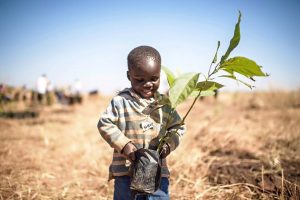 Greenpop is an award-winning social enterprise on a mission to (re)connect people with our planet. They plant trees through urban greening and reforestation projects, spread environmental awareness, and activate people through green festivals and workshops. Greenpop was founded in 2010 and has since planted over 57,000 trees at schools and other urban sites as well as forests and farms across South Africa, Zambia, and Tanzania.
Greenpop is an award-winning social enterprise on a mission to (re)connect people with our planet. They plant trees through urban greening and reforestation projects, spread environmental awareness, and activate people through green festivals and workshops. Greenpop was founded in 2010 and has since planted over 57,000 trees at schools and other urban sites as well as forests and farms across South Africa, Zambia, and Tanzania.
More information:
Find out more about Trees for Fees: http://bit.ly/Trees4Fees
Learn more about the Festival of Action: http://bit.ly/GPopZam
Join the Festival of Action 2016 event page: bit.ly/zam16FB
Check out the current activist projects: http://bit.ly/206uDBN
Website – www.greenpop.org
Facebook – www.facebook.com/GreenpopTreevolution
Twitter – @GreenpopSA
Instagram – @GreenpopSA
Youtube – www.youtube.com/user/GreenpopTreevolution
How Greenpop is celebrating Arbor Month
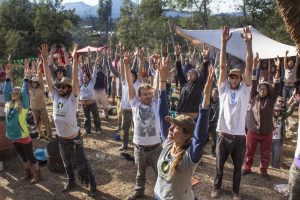 Greenpop, < the Cape Town-based urban greening and reforestation organisation, is gearing up for its biggest, greenest Arbor Month yet.
The organisation is celebrating its 6th birthday, joining eco-minded activists and athletes in running the Sanlam Cape Town Marathon for trees, while launching an ambitious fundraising campaign to gather funds to plant 1,000 trees in communities that need them around Southern Africa, and co-hosting the Hogsback Festival of Trees in the Eastern Cape. September in South Africa has never been greener!
What is Arbor Month?
Greenpop, < the Cape Town-based urban greening and reforestation organisation, is gearing up for its biggest, greenest Arbor Month yet.
The organisation is celebrating its 6th birthday, joining eco-minded activists and athletes in running the Sanlam Cape Town Marathon for trees, while launching an ambitious fundraising campaign to gather funds to plant 1,000 trees in communities that need them around Southern Africa, and co-hosting the Hogsback Festival of Trees in the Eastern Cape. September in South Africa has never been greener!
What is Arbor Month?
Celebrated since 1983, Arbor Month brings South Africans of all ages together every September to celebrate the beauty and importance of trees. During the course of the month, eco-education and tree planting take centre stage. The ideals of this month have clearly grown over the years: what started as Arbor Day then became Arbor Week, and Greenpop isn’t the only organisation that now fills the whole month of September with tree-related fun.
This month is also Heritage Month in South Africa, so this is a time to celebrate some of the country’s oldest, largest and most culturally-significant trees (South Africa’s ‘Champion Trees’ such as the Sagole Baobab Tree in Limpopo, the Three Queens trio of Matumi trees (Breonadia salicina) at Amorentia Estate near Tzaneen, the Dalene Matthee Big Tree and many others). 24 September, Heritage Day, is a special day for all South Africans, who are encouraged to celebrate their culture and the diversity of their beliefs and traditions. Viva Arbor Day!!
Greenpop’s Arbor Month activations:
Sanlam Cape Town Marathon:
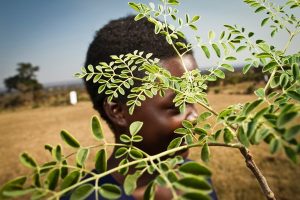 Since launching in 2007, the Sanlam Cape Town marathon has grown into one of the main events in Cape Town’s sporting calendar, as well as a superb opportunity for organisations with a social or environmental mandate to canvass support from the public. The event is endorsed by two of South Africa’s sporting greats – Elana Meyer and Francois Pienaar – for its tremendous potential to further develop in the hopes of being included as one of the World Marathon Majors. Greenpop has 17 athletic activists RUNNING FOR TREES at the marathon, combining a passion for being active with a passion for making a positive impact on the environment.
Since launching in 2007, the Sanlam Cape Town marathon has grown into one of the main events in Cape Town’s sporting calendar, as well as a superb opportunity for organisations with a social or environmental mandate to canvass support from the public. The event is endorsed by two of South Africa’s sporting greats – Elana Meyer and Francois Pienaar – for its tremendous potential to further develop in the hopes of being included as one of the World Marathon Majors. Greenpop has 17 athletic activists RUNNING FOR TREES at the marathon, combining a passion for being active with a passion for making a positive impact on the environment.
#RunForTrees
Hogsback Festival of Trees:
In honor of Arbor Month, Greenpop is happy to announce they will once again take part in the Hogsback Festival of Trees from September 23 to 25. Working in partnership with Terra-Khaya Family & Eco Lodge, Greenpop promises a weekend of immense fun and unforgettable memories as festival goers enjoy live music, delicious food and, of course, tree planting!
By rehabilitating the wattle-invaded land and planting indigenous trees in this unique cloud sanctuary, they will be fostering biodiversity in the threatened forests and adjacent grasslands. Greenpop has set an ambitious goal of planting 2,000 in this one weekend, helping to restore the natural habitat of numerous species in the Amathole mountains which are currently at risk, including the Cape Parrot, the Amathole toad and the Samango monkey. Get your green on and join Greenpop and the Terra-Khaya Family & Eco Lodge at the Hogsback Festival of Trees for an unforgettable weekend that is bound to make a long lasting impact!
#FestivalOfTrees
Open Nursery Day:
Greenpop’s nursery provides a temporary home to many of the trees the organisation plants around Cape Town as part of its Urban Greening Programme, as well as providing a hub for eco-education and sustainability awareness. Volunteers are invited to come together at Greenpop’s Open Nursery Day, when there will be plenty of ways to get their hands dirty for a good cause; mulching, watering and taking care of seedlings. RSVP here. There will also be other volunteer opportunities during the month – sign up for Greenpop’s newsletter to be alerted to them.
1 month, 1,000 trees:
 Greenpop was founded exactly six years ago, in September 2010, when Misha Teasdale decided to plant 1,000 trees in under-greened communities in Cape Town to compensate for his own impact on the environment from his global travelling through his advertising and production career. The last six years have been an incredible journey for Greenpop and, almost 70,000 trees later, Greenpop continues to plant trees at schools, community centres, farms and forests around Southern Africa, in the process, expanding their network, crossing borders, bridging divides and forging connections. In September they will be getting back to their roots by mobilizing to raise funds for 1,000 trees to mark their 6th birthday through a variety of inventive online and social media campaigns, including a TOP SECRET poster and online campaign to be launched on 1 September (clue: follow the hashtag #GotWood on Greenpop’s social channels in September!).
Greenpop was founded exactly six years ago, in September 2010, when Misha Teasdale decided to plant 1,000 trees in under-greened communities in Cape Town to compensate for his own impact on the environment from his global travelling through his advertising and production career. The last six years have been an incredible journey for Greenpop and, almost 70,000 trees later, Greenpop continues to plant trees at schools, community centres, farms and forests around Southern Africa, in the process, expanding their network, crossing borders, bridging divides and forging connections. In September they will be getting back to their roots by mobilizing to raise funds for 1,000 trees to mark their 6th birthday through a variety of inventive online and social media campaigns, including a TOP SECRET poster and online campaign to be launched on 1 September (clue: follow the hashtag #GotWood on Greenpop’s social channels in September!).
Why it is important to educate youngsters about marine pollution
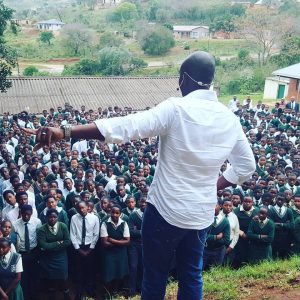 More < than 25 000 pupils in 50 primary and high schools situated in rural KwaZulu-Natal in South Africa will be educated about the devastating effects of pollution in the oceans on marine life through an interactive presentation hosted by Steven Ngubane of Aqua Amazing, sponsorsed by Plastics|SA, Ezemvelo KZN Wildlife and Umgeni Water.
According to Douw Steyn, Sustainability Director at Plastics|SA, this school programme forms part of the annual Clean-Up & Recycle SA activities that take place throughout the month of September. These activities culminate in national Recycling Day on Friday 16 September, and end by celebrating South Africa’s 20th anniversary of participating in the annual International Coastal Clean-Up on Saturday 17 September.
“The ocean remains one of the most expansive, mysterious and diverse places on Earth. Unfortunately, marine life is dying and the whole oceanic ecosystem is threatened by various sources of pollution from people, industry on land and natural causes. If we are to preserve the ocean's integrity and natural beauty, drastic measures will have to be taken to combat this scourge,” Steyn says.
Although many of the children being targeted with this school campaign have never seen the beach, it is important for them to realise that they too have an impact on the health of our oceans. Aqua Amazing therefore teaches children that their land-based litter ends up in rivers, and eventually the oceans, and that they have a responsibility to clean-up and recycle their plastics.
More < than 25 000 pupils in 50 primary and high schools situated in rural KwaZulu-Natal in South Africa will be educated about the devastating effects of pollution in the oceans on marine life through an interactive presentation hosted by Steven Ngubane of Aqua Amazing, sponsorsed by Plastics|SA, Ezemvelo KZN Wildlife and Umgeni Water.
According to Douw Steyn, Sustainability Director at Plastics|SA, this school programme forms part of the annual Clean-Up & Recycle SA activities that take place throughout the month of September. These activities culminate in national Recycling Day on Friday 16 September, and end by celebrating South Africa’s 20th anniversary of participating in the annual International Coastal Clean-Up on Saturday 17 September.
“The ocean remains one of the most expansive, mysterious and diverse places on Earth. Unfortunately, marine life is dying and the whole oceanic ecosystem is threatened by various sources of pollution from people, industry on land and natural causes. If we are to preserve the ocean's integrity and natural beauty, drastic measures will have to be taken to combat this scourge,” Steyn says.
Although many of the children being targeted with this school campaign have never seen the beach, it is important for them to realise that they too have an impact on the health of our oceans. Aqua Amazing therefore teaches children that their land-based litter ends up in rivers, and eventually the oceans, and that they have a responsibility to clean-up and recycle their plastics.
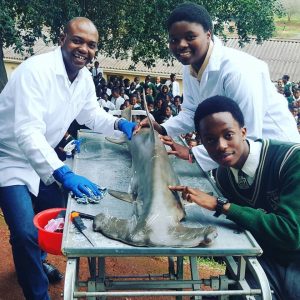 “Plastic debris is one of the most common elements found in the ocean. This poses a significant threat to marine life as a whole. Our interactive talks and presentations use graphic shark dissections to present the children with amazing facts and figures about the impact of marine litter and waste found in oceans on sharks, marine conservation and marine science matters,” Ngubane says.
“Plastic debris is one of the most common elements found in the ocean. This poses a significant threat to marine life as a whole. Our interactive talks and presentations use graphic shark dissections to present the children with amazing facts and figures about the impact of marine litter and waste found in oceans on sharks, marine conservation and marine science matters,” Ngubane says.
The first leaarners to benefit from the launch of this pilot project were the 900 pupils of Hlahlindlela High School, situated in the hills of Waterfall, KZN. In his talk, Ngubane educated the learners on the various sharks found along our coastline and dispelled many myths about sharks. He also highlighted the importance and many opportunities to be found in waste and recycling.
“Remember that your land-based litter ends up in rivers and ultimately in the oceans where it becomes a potential hazard for living creatures,” he warned. Pupils were also educated about Plastics|SA’s various sustainability initiatives and encouraged to take part in this year’s Clean-up and Recycle Competition.
